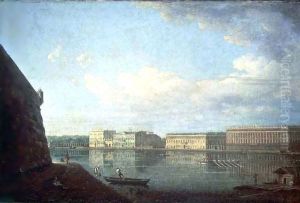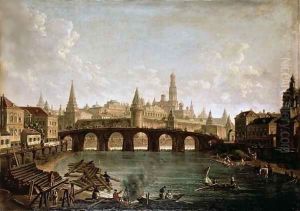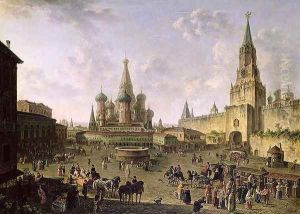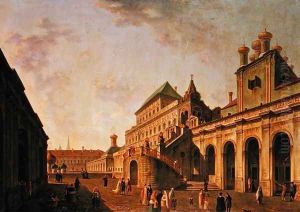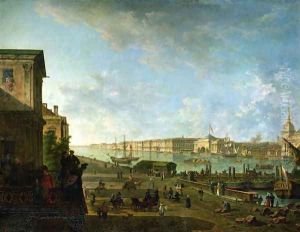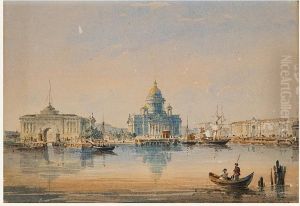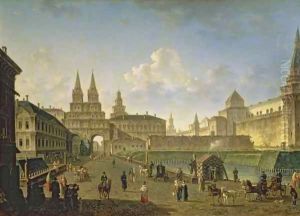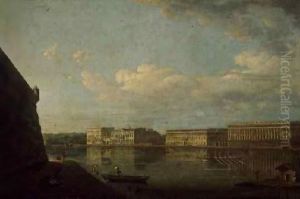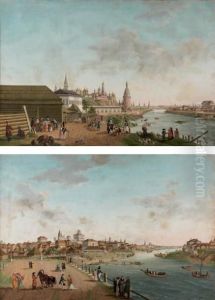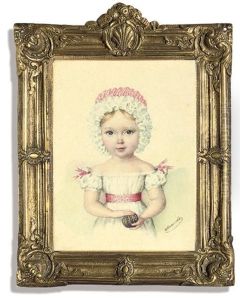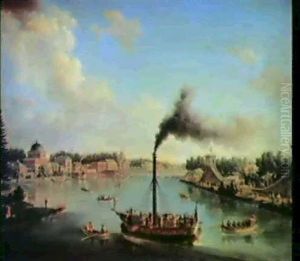Fedor Yakovlevich Alekseev Paintings
Fedor Yakovlevich Alekseev was a prominent Russian landscape painter associated with the late 18th and early 19th centuries, often referred to as the 'Russian Canaletto'. Born in 1753 in Saint Petersburg, Alekseev began his artistic journey at a young age under the guidance of his father, Yakov Alekseev, who was a carpenter and amateur painter. This familial influence set the stage for young Fedor's future in the arts.
Alekseev's formal training started at the Imperial Academy of Arts in Saint Petersburg, where he studied under the tutelage of landscape painter Fyodor Matveyev. During his time at the academy, Alekseev honed his skills in the classical style of landscape painting, which was heavily influenced by Western European aesthetics, notably by the works of Italian vedutisti (view painters) such as Giovanni Antonio Canal, better known as Canaletto. This influence was so profound that it earned Alekseev the nickname 'Russian Canaletto'.
After completing his studies, Alekseev traveled extensively throughout Russia, capturing the grandeur of its cities and the beauty of its countryside in his paintings. He became particularly noted for his urban scenes and architectural landscapes that meticulously documented the life and environment of his era. His works not only served as artistic expressions but also as historical records, portraying the transformation of Russian cities, especially Saint Petersburg, under the reign of Tsar Alexander I.
Alekseev's contributions to Russian art were recognized when he was awarded the title of Academician by the Imperial Academy of Arts in 1800. He continued to work prolifically, enjoying patronage from the Russian nobility and the imperial family. His artworks were characterized by their attention to detail, balanced composition, and delicate use of light and shadow, which reflected the influence of his early mentor, Matveyev, and the Italian masters.
Fedor Yakovlevich Alekseev's legacy is marked by his ability to blend the grandiose scale of Russian architecture with the nuanced play of natural light, creating a vivid and romantic portrayal of urban landscapes. His works are held in high esteem and can be found in major museums in Russia, particularly the State Russian Museum and the Tretyakov Gallery. Alekseev's death occurred in 1824, but his contributions to the world of landscape painting continue to be celebrated for their historical significance and artistic mastery.
